When you stop to think about how hard it is to craft the first episode of a brand new TV series, it’s a small miracle that any shows actually get made at all.
What do I mean?
Consider how much work the first episode of a new TV show has to do:
It must introduce viewers to a brand new world and characters they’ve never seen before, demonstrate the characters’ relationships, reveal who wants what from whom (and why), set the pace, establish the tone, magnify the stakes, and sharpen a storytelling hook that keeps first-time viewers coming back for more.
Get any one of those requirements wrong and you could still make a memorable first impression, but your odds of earning a loyal fanbase drop with every missing ingredient.
(One recent show that passes this test is Cobra Kai, whose pilot episode I analyzed here.)
To see what separates the classics from the also-rans, let’s look back at the pilot episodes of ten of the most influential TV shows of the past 20 years.
The Sopranos (1999)
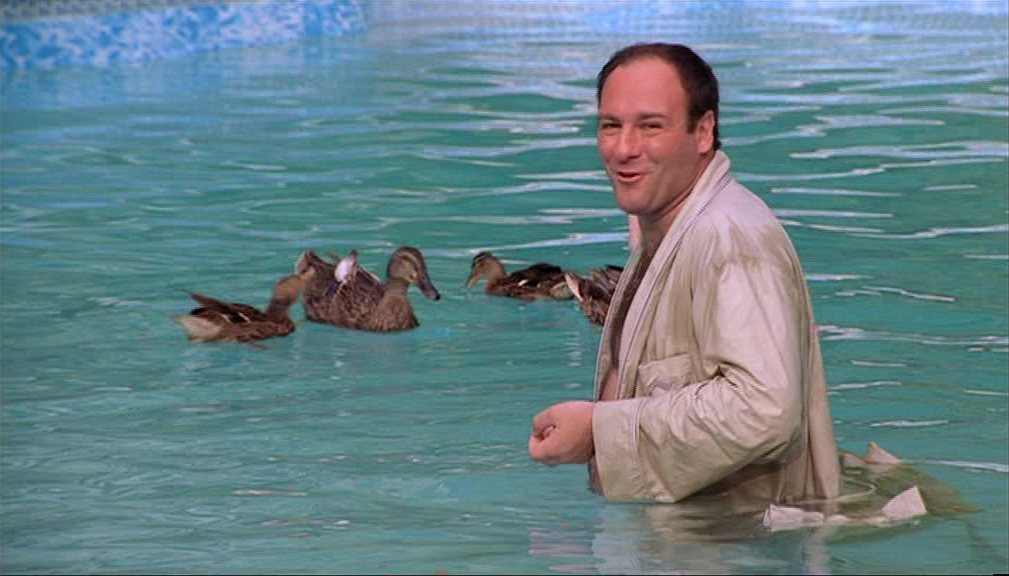
Quentin Tarantino’s Pulp Fiction may have changed our relationship with antiheroes on the big screen in 1994, but five years later, David Chase’s epic dramedy The Sopranos changed how television worked entirely.
In the script for the Sopranos pilot episode, we’re introduced to a darkly comic world of suburban mafia lifers who struggle to balance the needs of work and family. It’s a window into a lifestyle most of us will never experience, made relatable by the little details we all find so familiar: family strife, office politics, and the simple desire for a little peace and quiet amid the endless pressure of chasing the American dream… even when that dream is acheived through murder.
By framing the series as a juxtaposition between mafia business, family drama, and the tenuous relationship between Tony Soprano (originally named Tommy in the script) and his psychiatrist, Dr. Melfi, The Sopranos pilot creates three overlapping sources of escalating conflict. It also centers its theme on what it means to be a modern man, and whether a person is capable of changing even as the world changes around him.
Chase humanizes the characters’ villainy by inviting us to share their secrets, adopt their lingo, and empathize with their aspirations. And by depicting his lifestyle’s costly toll on his health, right from the very start we get the sense that Tony is on a one-way trip straight down that won’t end well for anyone — but we also can’t look away.
The Sopranos pushed the envelope of what was possible in serialized television. It vaulted HBO into the prestige TV spotlight and gave us a whole generation of “men behaving badly” that would fuel the next 20 years of serialized drama. And it all started with a mafia boss joyously feeding a family of ducks in his backyard.
You can watch the full pilot episode of The Sopranos here.
The Wire (2002)
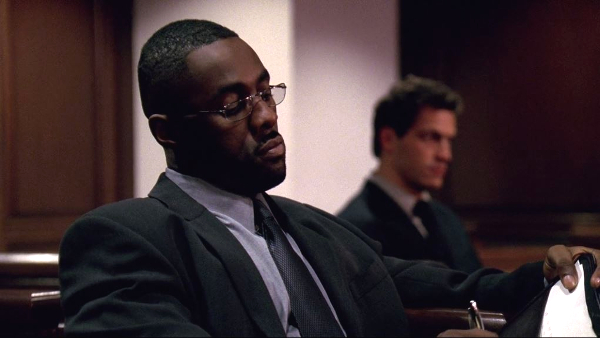
After The Sopranos shined a light on America’s fascination with the dark underbelly of the American dream, HBO took audiences one step deeper with The Wire.
A densely intertwined ensemble epic, David Simon’s The Wire tells the story of a Baltimore drug squad and the criminal empires they’re tasked with taking down. The series pits overmatched cops against ruthless gangsters, highlighting the thin line that separates a man of the law from a man of the street and laying the groundwork for the “how far would you go for your ideals?” genre of storytelling that fuels most of the shows on this list.
On The Wire, the cops are often more flawed than the people they’re trying to catch. Chief among them is homicide detective Jimmy McNulty (named McArdle in the script), a barely-functional and unfaithful alcoholic who can’t even assemble a bunk bed for his kids but who does excel at one thing in life: finding barely legal ways to uphold the law and catch otherwise-uncatchable criminals.
In the first scene of the pilot, McArdle/McNulty is talking with the only witness to a murder who’s willing to speak about it publicly. When pressed, the kid admits that the victim, a friend of his, didn’t need to die for what he did. What did he do? Steal money from their craps game, the same way he always did, and which they usually just beat his ass for.
The detective is confused, so he spells it out for the witness and for us: “If he always stole the money, every time, then why did you let him play?”
The witness is equally confused as to why the detective doesn’t get it:
“You got to, man. This is America.”
In the world of The Wire, everyone deserves a chance to make their own choices in life, even if their inner nature often proves impossible to override — a theme that HBO would return to in a different way 14 years later (see below). But for five seasons, The Wire exposed the cracks in the American system from crime to schools to politics in a raw way that no other show has done before or since, all while depicting some of the most memorable characters our TV screens have ever seen.
You can watch the full pilot episode of The Wire (although, for some inexplicable reason, it’s screen-flipped) here.
Lost (2004)
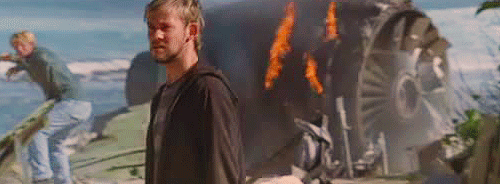
If The Sopranos changed how dramas worked on TV, Lost changed what we expect from mysteries and supercharged the online forum of fan theories.
The script for the pilot episode of Lost, written by J.J. Abrams, Damon Lindelof, and Jeffrey Lieber, is paced more like a feature film than a TV show. A cold open introduces our main character, Jack Shephard, and the mystery that surrounds him: where is he? Why is he there? And what’s menacing the survivors of a plane crash on a deserted island?
Part sci-fi epic, part suspense thriller, and part secret-filled soap opera, Lost doesn’t give us too many memorable characters in its pilot. But it doesn’t have to, because it isn’t a show about people; it’s a show about ideas. So instead, it gives us questions that the characters — and, by extension, the audience — are literally dying to know the answer to.
Lost may have built up a fan fervor that was impossible to please. Its “mystery box” style of storytelling leads to an ending that’s regarded as one of the most unfulfilling payoffs in TV history. But you don’t suffer a huge letdown without sky-high expectations in the first place, and that’s where Lost excels.
With its one-two punch of must-solve mysteries and cinematic adrenaline rushes, the pilot episode of Lost provided the perfect tension-building formula that showrunners have been relying on ever since.
RELATED POST:
Grey’s Anatomy (2005)

Shonda Rhimes wasn’t the first person to reinvent the prime-time TV soap opera, or to infuse a hospital-set case-of-the-week procedural with an endless supply of romantic complications. (See: ER., St. Elsewhere, Scrubs.)
But by cranking up the interpersonal stress to hyperbolic levels in nearly every scene while following a “color-blind” casting process that greatly expanded the diversity of onscreen representation on prime-time TV, Grey’s Anatomy rewrote the template for what you could expect on network television. And like most shows on this list, the DNA of its innovation is visible in its pilot script.
Misadventures, misdirections, and misunderstandings form the backbone of Grey’s Anatomy, which is a rom-com hiding in a medical melodrama’s clothes. The hospital staff perpetually balance life-or-death situations with #relationshipgoals romance, and the friction between staff members often creates complications for the patients and vice versa. But the real reason millions of people have been watching Meredith Grey and her colleagues for a record-setting 15 seasons and counting is simple: sparks and sobs.
Viewers tune in for the emotional roller coaster that Shonda Rhimes puts them through on a regular basis, giving fans the long-simmering romantic pairings and close-knit friendships they crave, only to rip them away in the blink of an eye. That serialized “predictable unpredictability” has become the hallmark of every Shondaland show, but it all started in the pilot, when MerDer went from two strangers having a casual hookup to (surprise!) having the most inappropriate boss-subordinate relationship imaginable, all in the same day.
Mad Men (2007)
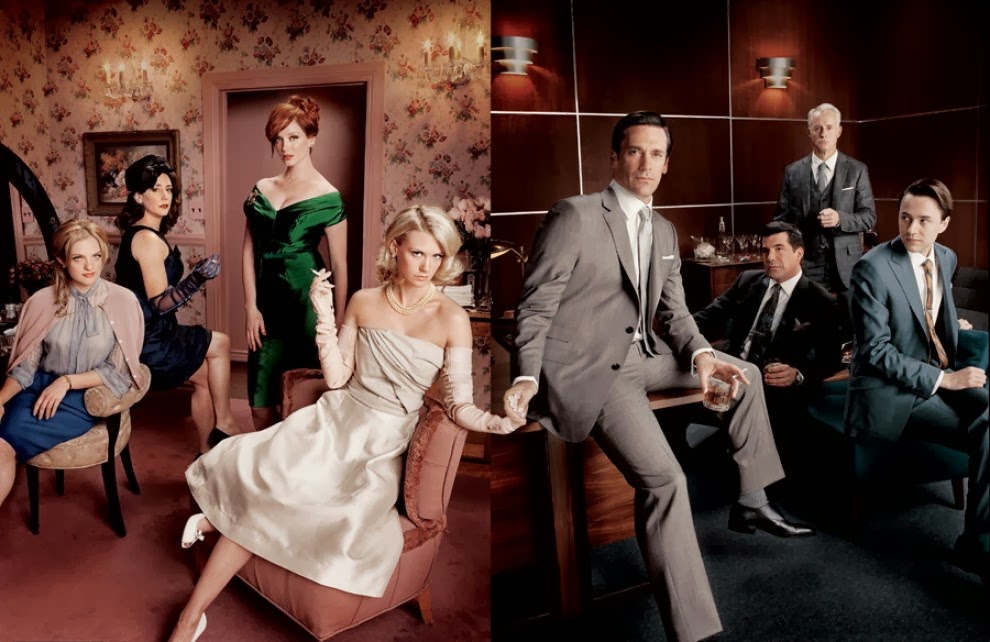
You can draw a line in TV history before and after 2007, because that’s the year AMC launched a little series that proved even the smallest cable channel can produce the best show on television.
As an alumnus of The Sopranos writer’s room, Matthew Weiner constructed Mad Men in the same vein: a hard-working family man trying to balance workplace pressure, family obligations, multiple mistresses, and the changing politics of a bygone era. As a cultural analysis, Mad Men reveled in the uncomfortability of exposing the sexism, racism, workaholism, and alcoholism of the swinging sixties while forcing its audience to ask itself just how much has really changed since the days of segregated schools and three martini lunches.
Mad Men revolves around Don Draper, a take-charge mystery man who’s easily one of the most compelling leads in TV history. The script for the pilot episode opens with Don turning his waiter into an impromptu focus group. It doesn’t matter that Don is a rich white man and his waiter is a black server at a time when two such men speaking in public would raise eyebrows; to Don, every person he meets carries a potential idea worth stealing and calling his own.
Later in the episode, Don rescues the Sterling-Cooper ad agency by delivering a last-minute genius idea that saves them from losing their biggest account, Lucky Strike cigarettes. While all the other tobacco companies feel hamstrung by the new health warnings about their product, Draper tells them to zig where everyone else is zagging: “It’s toasted.”
Those two little words completely change the discussion, and invite Lucky Strike’s customers to focus on the carefree lifestyle they want to be seen living, rather than the ugly truth.
The lesson of that scene also summarizes Don Draper’s entire life, and Mad Men as a whole: a show where nothing is more important than appearances, no matter the unaddressed rot underneath.
RELATED POST:
What the Existence of Don Draper and Katy Perry Really Says About You
Breaking Bad (2008)
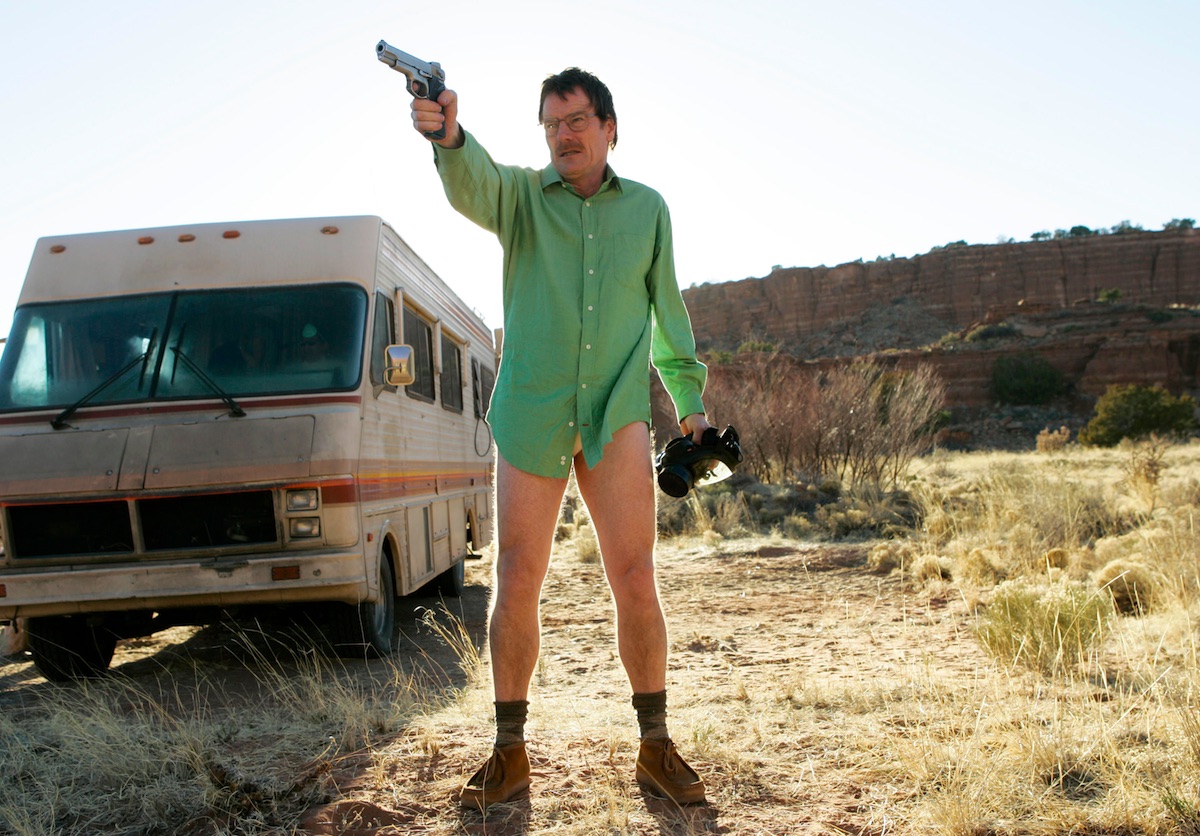
Once AMC proved any TV channel can create a medium-changing masterpiece, they upped the ante by proving that the same channel could do it twice in a row, in what would eventually become a trifecta of needle-moving hits.
Vince Gilligan’s Breaking Bad started out small, but by the show’s end it was one of the most buzzed-about tragedies on television. And what makes for a good tragedy? The best of intentions, gone horribly wrong.
In the pilot script for Breaking Bad, Walter White starts out as the world’s nicest, meekest guy. He’s a brilliant science teacher whose genius goes largely unappreciated by an uncaring system that’s designed to reward capitalism instead of Copernicus. When he’s diagnosed with terminal cancer, Walt decides he needs to leave some money behind for his family, but he has none. A chance enounter with his brother-in-law Hank, a “real man’s man” DEA agent who invites Walt on a ride-along where they intend to bust a meth dealer, reveals that there’s a fortune to be made by not following the rules… if you’re smart enough to get away with it.
Unfortunately, getting away with it is easier said than done.
And so begins Walt’s descent into becoming one of the most morally bankrupt characters on television. But his tragic arc wouldn’t have the impact it does if we didn’t see who we was before he “broke,” which makes the pilot’s setup of Walt’s thankless life so crucial: we empathize with Walt, and we know he deserves better than what life is offering him.
The question is, just how far are he (and we) willing to bend our ethics in pursuit of that better life before we snap?
You can watch the full pilot episode of Breaking Bad here.
The Walking Dead (2010)
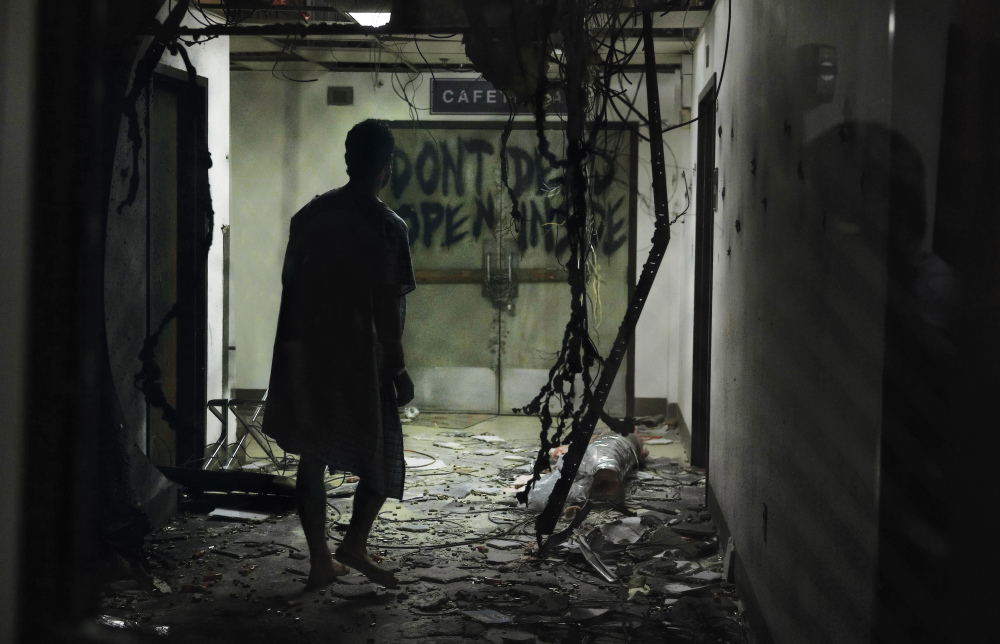
There’s not much to say about the pilot for The Walking Dead, because there’s not much said in the show’s pilot. The script for the episode is long on atmosphere and short on exposition, wisely relying on the audience’s pre-existing expectations of horror movies and the zombie subgenre in particular to do half the work — and it paid off by delivering AMC’s biggest hit.
The series begins, as many shows on this list do, in the middle of a mystery.
Sheriff Rick Grimes is our point-of-view character during what initially seems to be a post-apocalyptic event. He needs gasoline for his car, which is surrounded by vehicles that have been abandoned for days. The scene is filmed from a distance, which amplifies the uncertainty. The camera creeps closer as Rick learns there’s no gas to be found, introducing one of the show’s recurring themes: in this new world, the bare essentials of survival can never be taken for granted.
Finally, Rick encounters a little girl… who turns out to not be a litte girl at all. Rick’s instinct — to serve and protect — nearly gets him killed, but in the end he does the previously unthinkable in order to survive.
By trafficking in a near-constant state of downbeat dread, Dead became the biggest show on cable. In the process, it rewired audiences’ tolerance for blood, depression, and misery.
If The Sopranos changed what we thought we could see on TV (and who we thought we were capable of rooting for), The Walking Dead pushed the envelope of audience identfication and our shrinking expectations of a narrative safety net even further.
One year later, a new show would push those same boundaries in even more epic ways.
RELATED POST:
What Game of Thrones and The Walking Dead Can Teach Us About Modern Storytelling
Game of Thrones (2011)
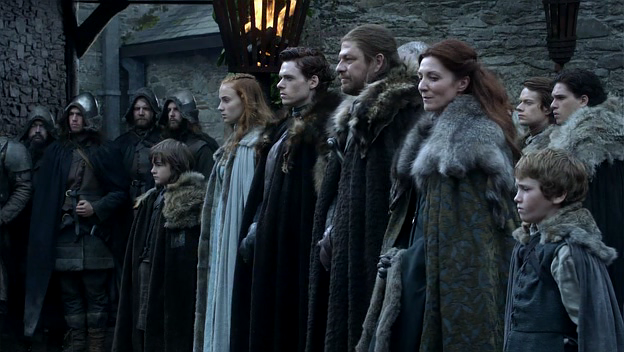
No one expected a series about zombies to become one of the most-watched shows on TV, and they definitely didn’t expect a series about swords and dragons to become the pop culture event of the decade. But HBO’sGame of Thrones has quickly perfected the art of must-see TV.
This is ironic, because the show’s original pilot episode was infamously so bad that showrunners David Benioff and D. B. Weiss reshot almost the whole thing. (Chalk that up to the power of honest feedback during the review process.)
But it’s no surprise that getting the show’s pilot right didn’t come easy.
Due to its fantastical setting, its complicated politics, and the vast array of recurring characters it needs to introduce and differentiate, the pilot episode for Game of Thrones has to work much harder than most. Therefore, it’s worth noting which key point the pilot episode chooses to center on first.
Instead of the mysterious death of Jon Arryn (which was cut from the aired pilot), the series begins with the foreboding introduction of the white walkers, the supernatural creatures whose unstoppable march southward drives the underlying tension for the rest of the series.
The original script for the Game of Thrones pilot differs in several ways from the finished version, but one of the biggest changes is the setup of the white walker scene. In the story’s opening, a trio of searchers has been sent north of the wall to find a band of wildlings who’ve been causing trouble. One searcher finds the band, but they’re all dead and dismembered. He wants to return to the safety of the wall, but his commander insists they investigate further, which leads them to a bad end at the hands of the undead.
In the filmed version, all the same elements are still in place, but they’re differently arranged. We spend a bit more time with the trio and see them split up, which gives us a sense of creeping dread. We see that one of the (un)dead is a child, which signals to the searchers — and to the audience — that this won’t be your standard story where the innocent are always safe. We see more of a class distinction between the commander and his comrades, which underscores the show’s recurring theme that power doesn’t always know best. And like any good horror movie, we barely see the monsters, but we feel the terror they invoke and the slaughter they unleash.
By drilling the show’s focus down to a trio of characters who are meant to introduce the series’s world, tone, pacing, and theme, viewers are steeped in the blood and mystery of Westeros well before we ever hear the name Stark or meet the dozens of characters we’ll follow for eight seasons. The opening also guides us through the show’s mix of genres — fantasy, mystery, politics, horror — all in one scene, which gives us some context for what’s possible in this unexplored new world.
And underneath all the sex and subterfuge, the ever-ticking clock of the white walkers that we saw in the show’s very first scene will always reminds us that winter is coming.
RELATED POST:
Stranger Things (2016)
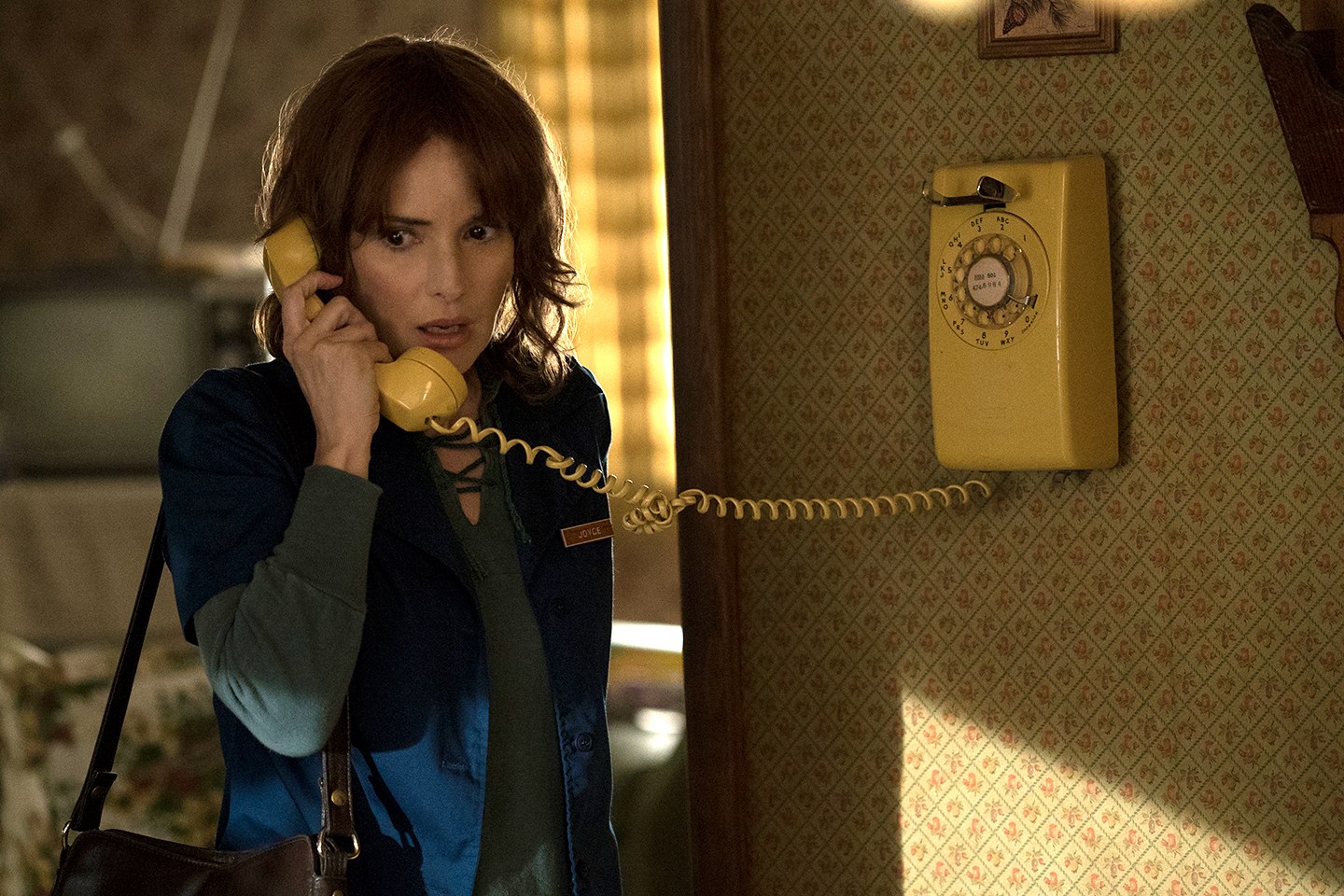
Netflix redefined the very nature of television with Orange Is the New Black and House of Cards, two series that proved you didn’t have to be on “TV” to make must-see, Emmy-winning shows.
But it wasn’t until the summer of 2016 that the world came to realize the insatiable power of binge-watching a full TV season in one sitting. That’s when Stranger Things, a previously unheralded ’80s nostalgia trip from first-time showrunners the Duffer Brothers, took America by storm.
On its surface, Stranger Things is deceptively simple: a boy goes missing, a town goes searching, and secrets (and monsters) are revealed. The show is a sometimes cheesy mix of sci-fi, horror, teen romance, coming-of-age comedy, and inside jokes, all blended together into a relentlessly-watchable series that’s at once comfortably familiar yet jarringly off-kilter. But its real genius is in its script structure, which propels every episode to a cliffhanger that demands immediate resolution… by watching “just one more” episode, until you’ve seen them all.
The script for the pilot starts by steeping audiences in a Spielberg-meets-Stephen-King atmosphere of wistful childhood memories tinged with terror. After a day-long game of Dungeons & Dragons (in which each boy’s actions clearly define their personalities), a quartet of small-town friends heads home. Separating at a fork in the road, Will Byers bikes onward in the dark, alone, where he encounters something very wrong. And invisible. And hungry.
It chases Will all the way home and corners him in a shed. With no adults around to help, Will tries loading a shotgun to defend himself, but it turns out that he — and we — are drastically underestimating the scope of what he’s up against.
Will disappears, and his family’s desperate search to find him fuels the next eight episodes, where they’ll uncover the town’s most unspeakable secrets along the way.
Part whodunnit and part what-is-it, Stranger Things takes the most addictive elements of Lost, wraps them in the cultural references from the most-quoted era in pop culture history, and structures every episode around a compulsive “what happens next?” cliffhanger that fans simply can’t resist.
While you can celebrate Stranger Things for being Netflix’s first completely original breakout series or blame it for the increasing cliffhanger-ization of TV shows that are now designed to be mindlessly binged instead of deeply absorbed, you can’t deny that the series no one saw coming has turned into the one that all other series are now compared against.
RELATED POST:
Steve Harrington, Jaime Lannister, and the Secret to Writing a Redemption Arc
Westworld (2016)
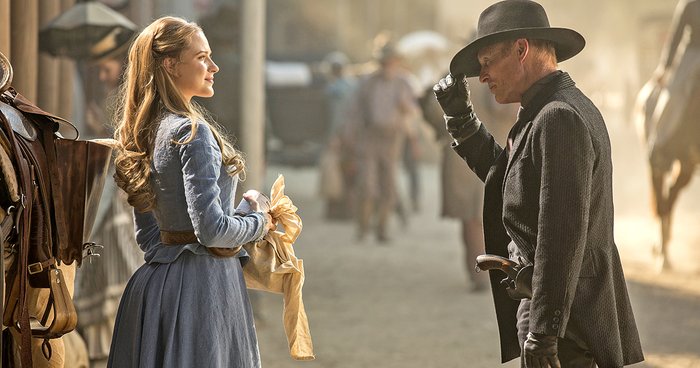
It’s hard to fully judge a show before it ends, especially in terms of how well its pilot represents the long-term impact of the whole series. But the cult of online fan theories that began with Alias and Lost and reached a seeming peak with Game of Thrones has since elevated one other series to the top of the TV-as-puzzle pile: HBO’s heir apparent to Westeros, Westworld.
Perhaps best known for inspiring a legion of Reddit fans to solve the show’s riddles faster than the showrunners can write them, Westworld is nonetheless a deeper meditation on the meaning of life than it often gets credit for. Its recurring themes like the civil rights of robots, the ethics of immortality, and the question of free will are likely to remain ultra-relevant in our current era where Silicon Valley appears to have more control over our future than any other global institution.
In the pilot episode, we’re introduced to a variety of characters who each exist in relation to Westworld, a wild west theme park where visitors pay top dollar to act out their most heroic or villanous fantasies. Nothing in the park is forbidden, as established by the pilot’s centerpiece scene in which the Man in Black murders white hat Teddy Flood in cold blood before dragging Teddy’s helpless sweetheart Dolores Abernathy into a barn to have his way with her.
The episode is packed with storytelling tricks that only become clear over time and in retrospect, but its first reveal also packs its biggest punch: by placing us in Teddy’s shoes for much of the first episode, we (and he) are led to believe that Teddy is the story’s hero. It’s only through the actions of the Man in Black that we realize we’re watching a show where there may be no heroes at all. It’s a fitting end to the “men behaving badly” cycle of storytelling that HBO started with The Sopranos 20 years earlier.
RELATED POST:
If You Liked This Post, You May Enjoy…
Why Black Sails Has One of the Best Main Characters in TV History
WandaVision’s Biggest Question Gets Deep: Who Are We, Really?
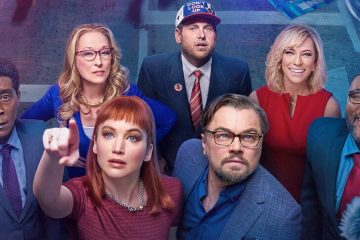

0 Comments